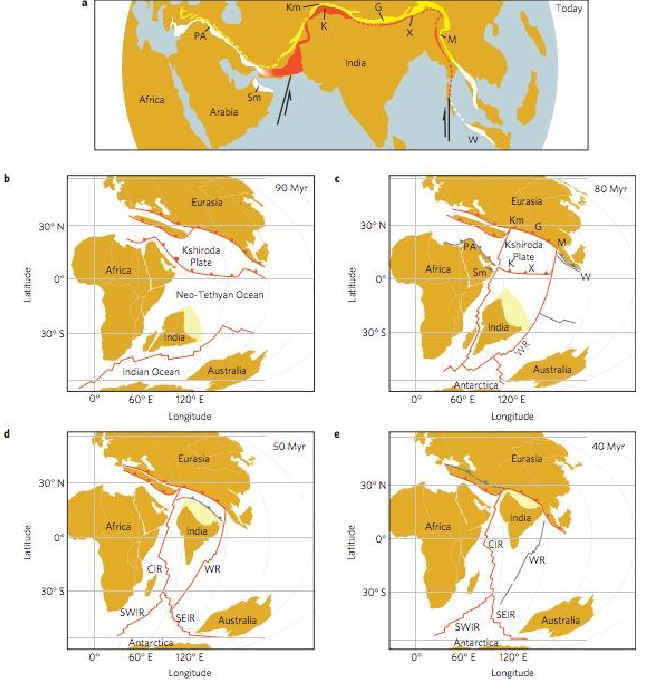EESC 101 Lecture 6: Convergent Boundaries
1/13
Earn XP
Description and Tags
Exam 1
Name | Mastery | Learn | Test | Matching | Spaced |
|---|
No study sessions yet.
14 Terms
Subduction Zone Structure
Trench: deep depression where oceanic plate begins to sink
Subducting Plate: denser oceanic lithosphere descending into the mantle
Overriding Plate: continental or oceanic plate above the subducting slab
Volcanic/ Magmatic Arc: chain of volcanoes on overriding plate from magma generated by slab melting
Accretionary Prism: sediments scraped off subducting plate forming a wedge at the trench (like a snow pile pushed by bull dozer)
Back Arc Basin: depression or basin behind a volcanic arc at a subduction zone cause by overstretching of the plate
Forearc Basin: basin between a volcanic arc and the trench at a subduction zone, forms as a result of accumulated sediment from accretionary prism
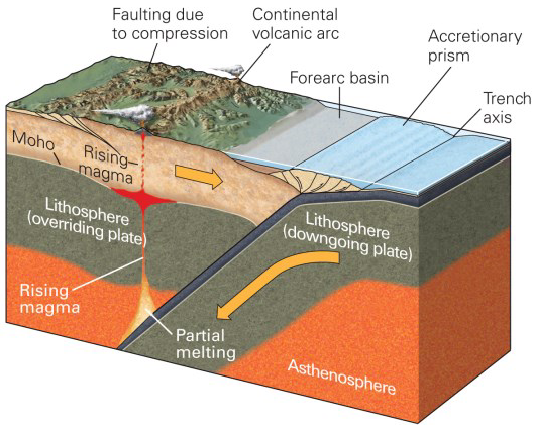
Slab Rollback
lower plate bends more steeply over time “pulling” the upper plate forward and mantle upward
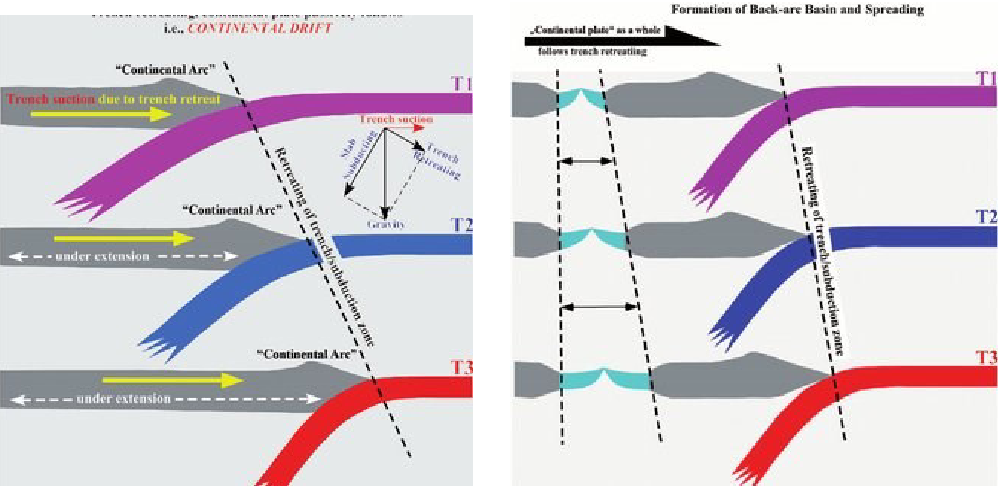
Where do subducting slabs end up?
unclear but some continue down into lower mantle
may even sink all the way to the core-mantle boundary
potential cause of mantle plumes
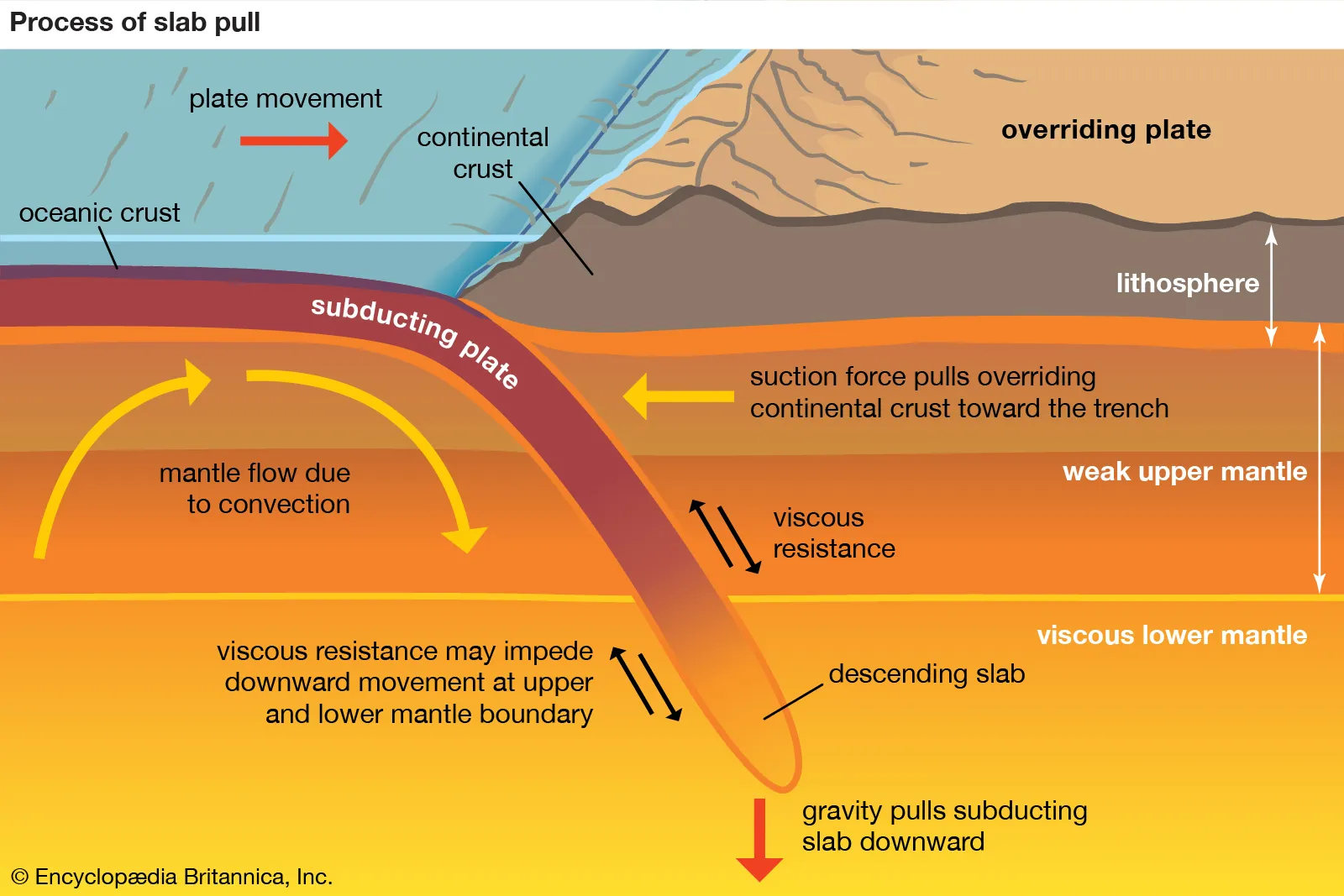
Foreland Basin
a basin that forms next to a mountain range due to the weight of the mountains pressing down on the crust, bc crust bends downward (flexes) under the mountains, creating space for sediment to accumulate
Appalachian Basin
Thrust Faults and Overthrust Belts
Formed: convergent plate boundaries where plates are pushed together against gravity
Involve large-scale compressional faults called thrust faults
series of these faults creates an overthrust belt, stacking slices of crust over one another
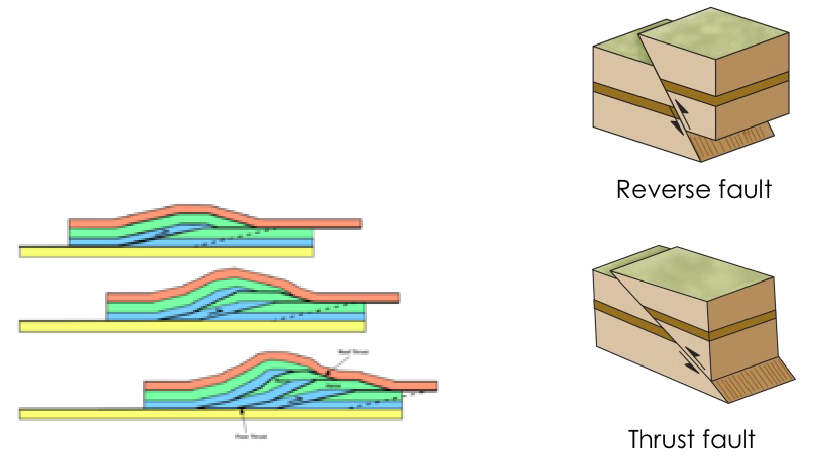
Ophiolites
slices of oceanic crust accreted to continents
Formation: through obduction (oceanic crust pushed onto continental crust)
Significance: reveal oceanic plate structure
Notes:
not fully representative of mid-ocean ridges
usually from back-arc or peripheral basins
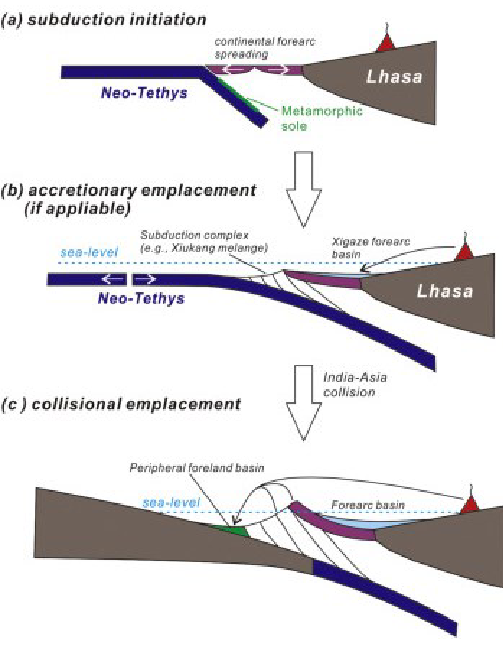
Ophiolite Distribution in Eastern Mediterranean
important source of metals like copper
cyprus ophiolite
major source of copper in the ancient world
first mined over 5000 years ago
finally extinguished major deposits in 1972
also contained many sulfur rich minerals
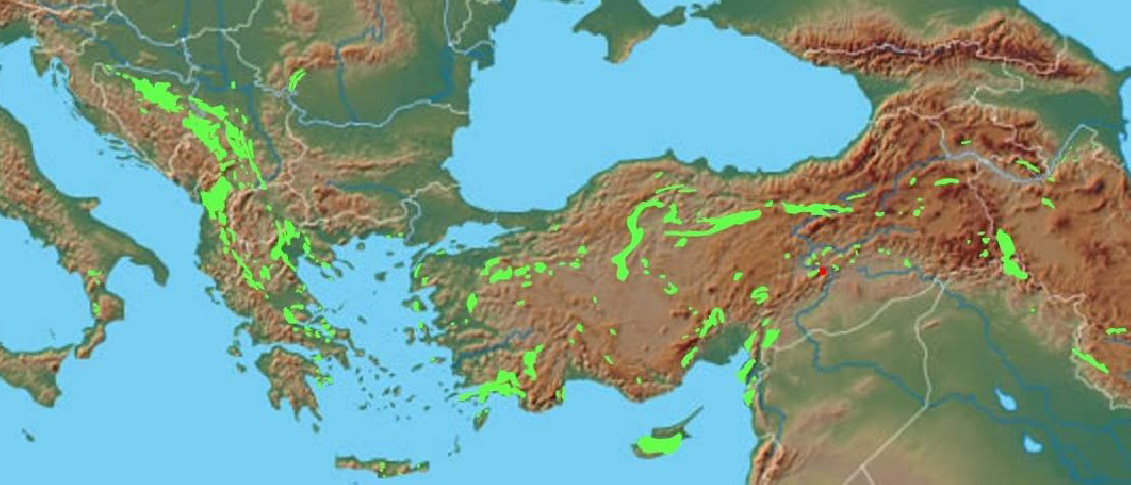
Subduction Related Earthquakes
occur along the subducting plate down to ~660 km depth
strongest quakes happen at plate boundaries:
shallow (<~70 km): from faulting in the lithosphere, strongest
deep (~70–300 km): from deformation within the slab
very deep (>300km): from shifts in mineral structure, powerful but less likely to be destructive at surface
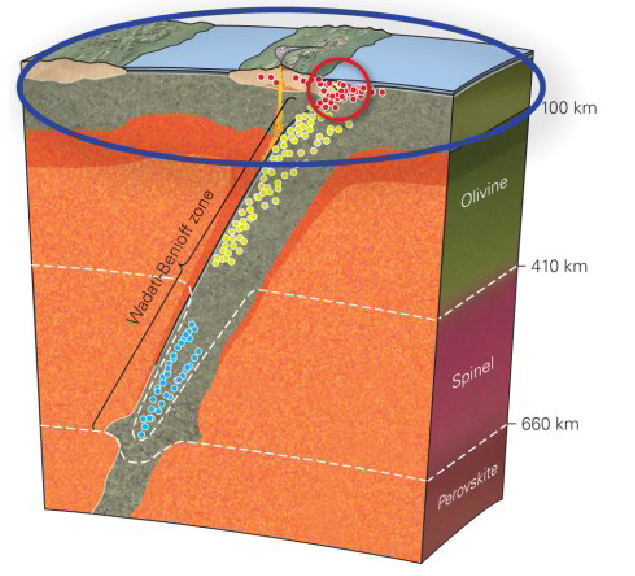
Wadati-Benioff Zone
Definition: zone of earthquakes that traces the downgoing subducting slab
Significance: maps the path of the subducting plate through the mantle
Named after: Kiyoo Wadati and Hugo Benioff, who studied deep earthquakes
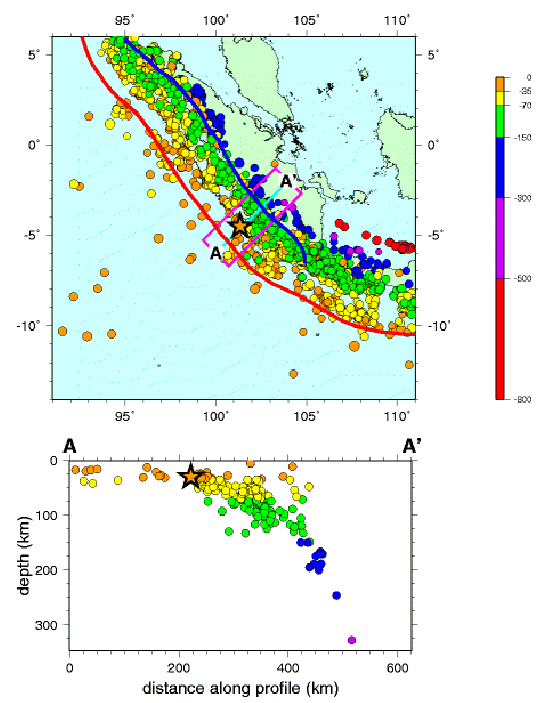
Volcanism in Subduction Zones
types of volcanic arcs:
continental arc: volcanoes on continental plates
island arc: volcanoes on oceanic plates
Location: volcanoes form at a specific distance from the plate boundary, where the subducting slab is ~150 km deep
Mechanism:
subducting slab carries sediments and water
upper mantle has volatile minerals
water and volatiles lower melting point, causing melting at ~150 km depth
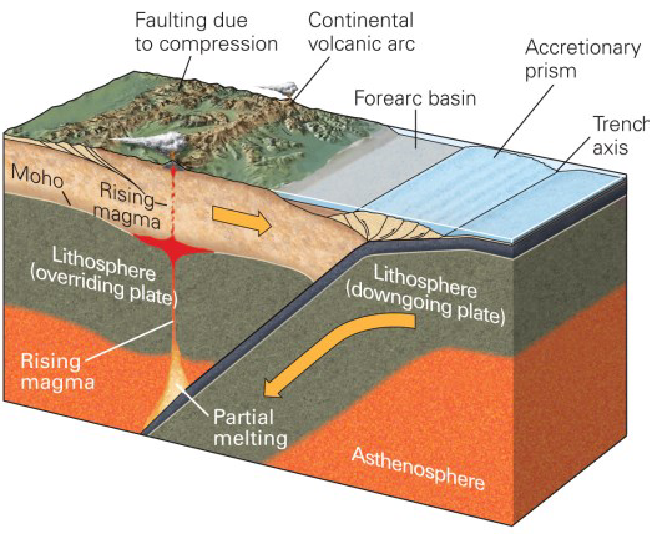
Ocean-Ocean Collisions
in ocean ocean collisions, the older plate (more time to cool = more dense) will be the subducting plate
creates island arcs
EX Aleutian Islands
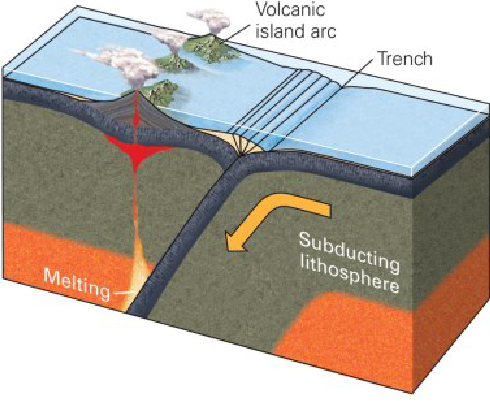
Ocean-Continent Collisions
create some large volcanic mountain chambers
volcanic material tends to be felsic (partial melting of continental crust)
lower angle of descending slap correlates to wider mountain range
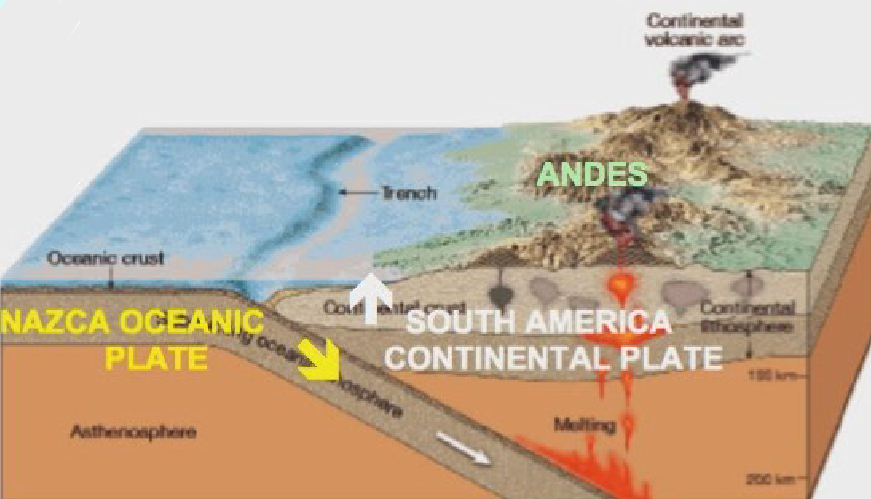
Continent-Continent Collisions
once all intervening oceanic crust has been subducted, continents will collide
continental crust cannot be subducted
Underplating: when one continental plate is pushed beneath another, slices of crust fuse to the base of the overriding plate thickening continental crust
creates large, less volcanic mountain ranges
Orogenesis: process of mountain formation through tectonic forces
India-Eurasia Collision
largest collisional feature on earth today
not volcanically active, but still has many earthquakes
